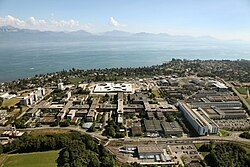Barrier
Most mobile students suffer from many barriers both in their lives and academic activities. For example, Sanchez, Fornerino and Zhang did a survey among 477 U.S., French and Chinese students who studied in their home countries. This survey suggests that the students from these three countries face or fear barriers such as family barriers, financial barriers, psychological barriers and social barriers. [7] The psychological barriers relate to aspects such as homesickness or the fear of the new environment and the social barriers usually relate to friends and family. Different students are various in degree of these problem. [7] [8]
For the credit mobile students, they will meet some specific academic difficulties. A survey by Klahr and Ratti emphasizes the importance of the lack of recognition of periods abroad and credit transfer. [9] Besides, insufficient knowledge of academic prerequisites and qualifications of various countries, differences in the structure of the academic term, disparities in the times at which examinations are taken, these are all common problem of credit mobile students when they engage in academic activities. [9] Moreover, the lack of foreign language skills is considered as another big barrier to most of the mobile students, not only the credit mobile students. [9]
Female mobile students have some particular barriers because of their gender role. The female mobile students, especially who are in older in age, are tied to a specific spatial context by private responsibilities. [10] For example, partnering and children will have a great effect on the female's academic mobility. [11] Some findings from qualitative interviews with researchers from Bulgaria and Poland confirmed the great significance of personal and family relationships for female's academic mobility, either as a barrier or as an incentive. [10] [11]

